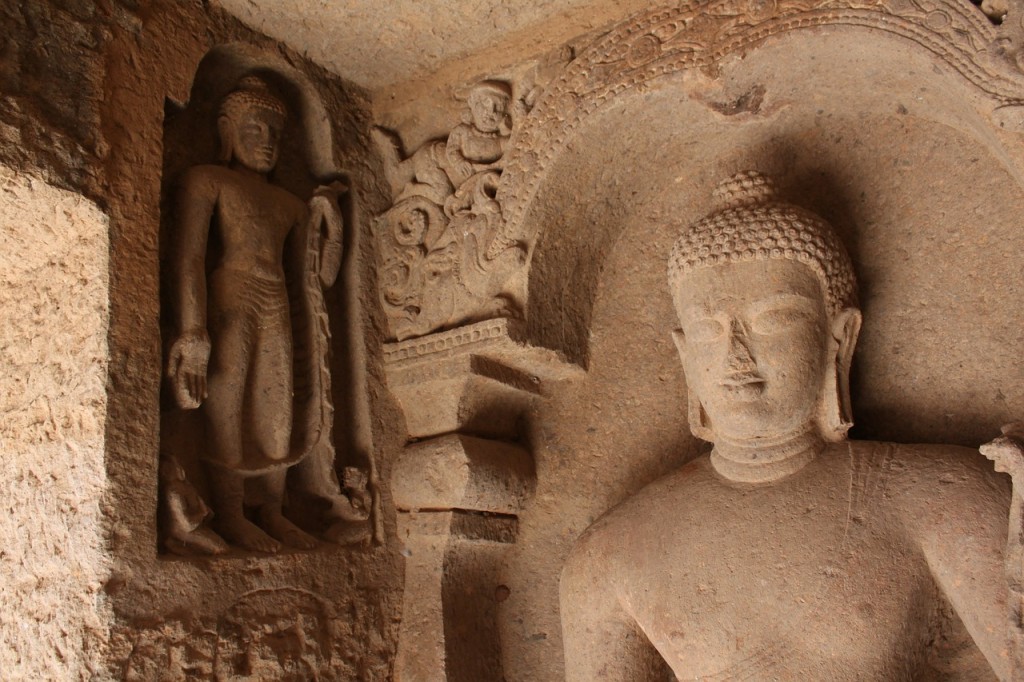
Recently I was deep in meditation practice, letting go of everything that passed across the screen of my consciousness. There were all sorts of very interesting things emerging in the fertile field of my awareness, but because I was meditating, I had resolved to let it all go.
How Do You Meditate
I practice a form of meditation that comes from the great Indian sage and master of Advaita Vedanta, Ramana Maharshi—it’s called free awareness. In most meditation practices you focus on something, like the breath, a mantra, or maybe a visualization. Free awareness aims for the same ultimate goal as these practices–existential relief and release–but we take a different path to get there.
In this practice, much like Zen, we let our attention rest on the unlimited dimensions of awareness itself. After many years practicing free awareness, I’ve learned how to free my mind from the thought stream. If you haven’t discovered how to do this for yourself, I can’t recommend it highly enough. What lies beyond thought is wordless and wonderful and anyone can do it.
Free awareness is a simple practice, but it’s challenging and endlessly subtle. For me, it’s the bedrock of my spiritual life. A meditation practice that is strong and stable is priceless. It keeps me connected to the source of my deepest intention, and it reaffirms my conviction in the inherent positivity of life.
What is Free Awareness?
So it was during this recent practice session, when I was letting go again and again, that I started to reflect on what I was actually doing. Here’s what struck me.
In essence, free awareness is a kind of dynamic and constant state of inquiry. But it’s the type of inquiry that doesn’t involve active thinking, as we know it. In free awareness, you resist the temptation to focus on any one thought or feeling. Your singular goal is this: sit still, relax, and pay attention to awareness itself.
Once you get the hang of it, you start to see something interesting about the mind and how it works. Thoughts require your focused attention to have meaning and substance. Without your attention, they pass through your awareness and eventually lose momentum and fade away.
How do I know this? Because I have tested and verified this approach over fifteen years of repetition. I discovered that when I don’t pay attention to something in the field of my awareness, it disappears. It lives or dies in relationship to how much I feed it with the energy of my awareness. You can try it for yourself and see.
So basically, in this practice, the fundamental position is one of renunciation. You let go of absolutely everything. You are no longer validating the truth or reality of any thought with your focused attention. In the context of free awareness practice, no thought, feeling, image, conclusion, insight, or brilliant idea is better or worse than another.
How Do You Meditate: The Art of Paying Attention
This is an empowering practice. It’s also hard. Why? Because you realize that there are thousands of thoughts passing through your mind every few minutes. It’s a total circus! I probably don’t need to tell you that if you’ve tried to meditate before, but when you try and let it all go, it’s like the volume under that circus tent goes up 100 decibels.
So you start to realize that there is a relentless stream of fluid objects in your mind that grow and change and merge into each other and take on their own life. But even more than that, we are attracted to some thoughts more than others, and some of them we are downright obsessive about. In the beginning, it’s just not natural or easy to let them go.
Usually, we watch this endless drama in our head and get involved, consciously or unconsciously, and assume that it all means something about us. But in the practice of free awareness, the trick is not to touch any of it. If you do (and you will!), then you drop it and return to the practice.
Eventually, as you keep letting go, the entire momentum of thought loses steam and that’s when pure awareness trumps thought. What does that mean? Well, a few things.
What Lies Beyond Thought
First, it means that you stop letting go of “thoughts” per se and you start letting go of everything. After letting go enough, all your thoughts resolve into a single stream of thought. Thought, as a whole, becomes one object which you want to let go of. This is the art and science of the practice. When you are letting your attention rest on awareness itself more than you are focusing on thoughts, everything starts to change.
At this point, you might be wondering, “why do I want to let go of thought in the first place?”
Because when you let go deeply enough, when awareness trumps thought, you start to experience a vast and unlimited space beyond thought. Free awareness introduces you to a new reality. And the reason you want to let go of thought is because it obstructs your access to this unlimited dimension.
One way to think about our predicament is this. Imagine you are a fish and your thoughts are water. As a fish, all you know is water. It’s the medium for all of your oceanic experiences. It’s just like that with human beings and thought. For most of us, the mind stream is the essential filter for experiencing and navigating our lives.
But there is another reality—like the vast sky that rises above the water and touches the stars.
And once you experience the wordless wonder of reality beyond thought, you are changed forever. Miraculously, you have access to an experience of Life and self that is outside anything you have known before. It is not of this world, so there is nothing to compare it to. It’s free, unlimited, pure, and completely awake. At the same time, it is unmistakably and completely you.
It’s important to say here that thought isn’t wrong or bad. The mind is a thinking machine. In fact, it’s an outrageous miracle of evolution. Without it, we would never be able to commit the acts of creativity which reflect the best parts of our humanity and propel us forward.
The point I’m making is that Free Awareness helps us to stand outside the limited frame of thought. It provides a new and unlimited reference point and, for many of us, restores an innate connection to the good, the true, and the beautiful. For me, it reminds me every day that part of me is infinite, invincible, and untarnished by the trials of this life.
When I am practicing, I never really think about all this. I just let go of it all. And I tell you, when I’m sitting there letting the edifice of the mind crumble to pieces, it’s like the whole world wakes up and everything is new, vivid, and alive. And I remember, oh, I’ve always been here.



It is a wonderful article .But the problem is I am obsessed with thought.If it is really your experience let me know something more about the practice.Can I find a really enlightened one? How can I get a personal guidance?
Hi Valsalan, Thanks so much. Well, the practice itself is super simple. The way I was taught by my teacher was to follow these instructions: be still, relax, pay attention, and have no relationship to the contents of consciousness. Those instructions can also the answer to your question since I think we are all obsessed with thought, but if you choose to ignore thought, you start to exercise a different muscle in your awareness. That’s what I find. It doesn’t come naturally to us, but with practice it can become natural. I wish there was an easy way to do this, but practice is the only way I know how to break the addiction. Good luck! And there are many excellent teachers out there who can help.